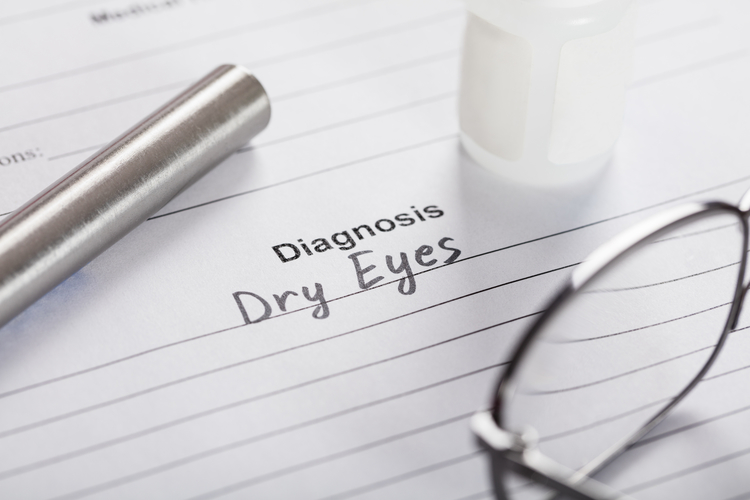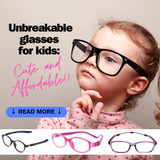Facts About Dry Eyes
Shop Prescription Glasses

What Is Dry Eye?
When your eyes do not produce enough tears, it is referred to as “dry eye.” In order for our eyes to remain healthy and comfortable, tears must lubricate the eye’s surface. When you blink a film of tears, called ‘tear film,’ spreads across the eye’s surface to wash away particles that do not belong in they eye and prevent tears from drying too quickly all while keeping the surface of the eye moist.
Experts estimate that millions of adults that live in the United States are affected by dry eye. As you age your chances for developing dry eye increases. Women have a higher chance of developing dry eye compared with men.
What Are Tears and How Do They Relate to Dry Eye?
Tears are what lubricates our eyes, which results in having the ability to see clearly. When you blink tears form a tear film that spreads over the eye, keeping the surface smooth and clear. Also with each blink, the tear film continuously bathes the cornea - the clear, dome shaped outer surface of the eye - which nourishes its cells and provides it with a layer of liquid protection.
The tear film consist of three layers, each with it’s own purpose, however all layers work together to keep eyes healthy and prevent infections from occurring.
- Oily Layer: The outermost, lipid-based layer of the tear film that serves to seal the tear film, which helps reduce evaporation of natural tears.
- Water Layer: The middle layer is primarily water-based and serves to lubricate the eye, preventing infection by washing away foreign particles.
- Mucus Layer: The inner layer allows the water layer to spread over the entire surface of the eye, keeping the eye lubricated and to stop the tears from sticking to the surface of the eye.
When nearby glands change the composition of the tears or fail to produce enough tears for the tear film, vision and the eye’s health are compromised. Tears on the surface of the eye play a critical role in focusing light, which can severely impact vision.
Tears are composed of a mixture of mucus, water, and fatty oils. More than 1500 different protein types keep the surface smooth and protected from any foreign object.
What Causes Dry Eye?
If tear production changes, whether it increases or decreases its production, the tear composition is imbalanced. The following are factors that contribute to dry eye:
- Advancing age increases the risk of decreased tear production. Dry eye is common for people aged 50 years or older.
- Autoimmune disorders: Sjogren’s syndrome, rheumatoid arthritis, lupus, and scleroderma
- Smoky, dry, or windy environments increase tears evaporation
- Medications including antidepressants, birth control pills, antihistamines, hormone replacement therapy to relieve menopause symptoms, and decongestants
- Medications for high blood pressure and Parkinson's disease have been associated with dry eye
- Blepharitis (inflammatory eyelid disease)
- Rosacea (inflammation skin disease)
- Disorders such as diabetes, Vitamin A deficiency, and thyroid disorders are associated with dry eye
- Temporary effects of dry eye can occur after laser eye surgery
Prescription Swim Goggles – Sports Goggles – Ski Goggles
Leader in Prescription Goggles and Glasses
Kids RX Swim Goggles – Adult RX Swim Goggles – Prescription Sports Goggles - RX Ski Goggles

 Canadian Dollar (CAD)
Canadian Dollar (CAD)
 Euro (EUR)
Euro (EUR)
 British Pound (GBP)
British Pound (GBP)






